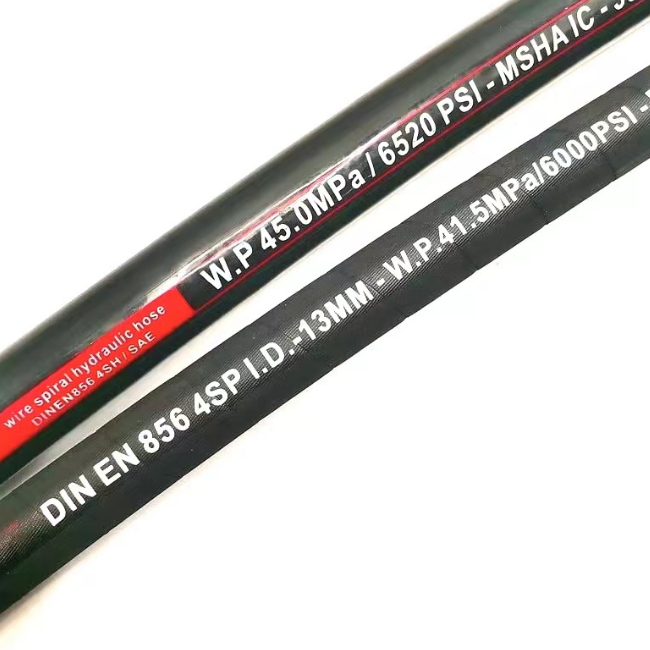335345435
Oct . 14, 2024 18:29 Back to list
EN853 2SN Hose Manufacturers and Specifications for Hydraulic Applications
Understanding EN 853 2SN Standards and Their Importance in Hydraulic Hose Manufacturing
In the realm of hydraulic systems, one of the most critical components is the hydraulic hose, which plays a vital role in transmitting power and fluid. Among the various international standards that ensure the safety and efficiency of hydraulic hoses, the EN 853 2SN standard stands out prominently, particularly for its strict specifications pertaining to hose construction and performance. This article will delve into the EN 853 2SN standard, exploring its significance in the manufacturing process, and the advantages it offers to various industrial applications.
What is EN 853 2SN?
EN 853 2SN is a European standard that establishes the requirements for high-pressure hydraulic rubber hoses and their fittings. Specifically, the '2SN' designation refers to a two-wire braided hose constructed to endure high operational pressures. These hoses are designed for hydraulic applications where pressure and temperature are crucial – they typically feature a working pressure of up to 400 bar, making them ideal for high-performance machinery. The standard ensures that hoses have the necessary characteristics to withstand intense environments, protecting against both burst failure and abrasion.
Key Features of EN 853 2SN Hoses
One of the primary features of hoses manufactured according to the EN 853 2SN standard is their robust construction. The hose consists of an inner layer made from high-quality synthetic rubber, which is designed to resist oil and other hydraulic fluids. The inner layer is surrounded by two layers of steel wire, providing the necessary structural integrity to withstand high pressures. Finally, an outer layer of weather-resistant rubber ensures longevity and resilience against environmental factors such as UV exposure and extreme temperatures.
en853 2sn manufacturer

Additionally, EN 853 2SN hoses are tested for safety, which includes thorough inspections for compliance with dimensional tolerances, pressure resistance, and flexibility. Manufacturers of these hoses must adhere to stringent quality control measures to ensure that each product meets the required safety standards.
The Importance of Compliance with EN 853 2SN
For manufacturers, complying with EN 853 2SN is vital, as it not only guarantees product safety but also enhances market credibility. In industries such as construction, agriculture, and automotive, where hydraulic systems are extensively used, employing hoses that meet this standard minimizes the risks of hose failure, thereby reducing maintenance costs and improving the longevity of machinery.
Furthermore, compliance with the EN 853 2SN standard allows manufacturers to export their hoses to various markets across Europe and beyond, where safety regulations are strictly enforced. This opens up new avenues for business and fosters a competitive edge in the global market.
Conclusion
In the hydraulic hose industry, understanding and adhering to international standards like EN 853 2SN is essential for manufacturers and end-users alike. These standards ensure that hoses are built to withstand the high pressures associated with hydraulic systems while maintaining safety and reliability. For industries that rely on these components, selecting hoses compliant with EN 853 2SN standards not only guarantees optimal performance but also fosters confidence in the equipment utilized. As engineering practices continue to evolve, the importance of adhering to established standards such as EN 853 2SN will only grow, underscoring the need for both manufacturers and consumers to stay informed and compliant.
-
SAE 100 R17 Black Smooth Cover Hydraulic Hose
NewsMar.07,2025
-
SAE 100 R17 Black Smooth Cover Hydraulic Hose
NewsMar.07,2025
-
SAE 100 R17 Black Smooth Cover Hydraulic Hose
NewsMar.07,2025
-
SAE 100 R17 Black Smooth Cover Hydraulic Hose
NewsMar.07,2025
-
SAE 100 R17 Black Smooth Cover Hydraulic Hose
NewsMar.07,2025
-
steel wire braided hydraulic hose
NewsMar.07,2025



